[ad#sponsor]
This month, Three to Get Ready moves off the beaten path of gecko keeping to explore the Australian genus Oedura, commonly known as the “velvet gecko” which can no longer be exported. Three experienced Oedura keepers, including an Austrialian native, have responded to the following questions:
- What species are you keeping?
- What got you interested in this species and where did you get your first?
- How are they set up? Describe your enclosure.
- What do you find most interesting about them?
- What do you find to be the biggest challenge?
Danny Brown
I currently keep a large number of Oedura species including O. attenboroughi, O. castelnaui, O.coggeri, O. filicipoda, O. gemmata, O. jacovae, O.lesueurii, O. marmorata, O. monilis, O. rhombifer, O. robusta, O. tryoni and 6 undescribed species. In each of these species I maintain numerous locality specific bloodlines e.g. 11 locality specific forms of O. marmorata.
Oedura were a natural progression from smaller species such as Christinus and I got my first pair of Oedura tryoni in 1983 from a friend.
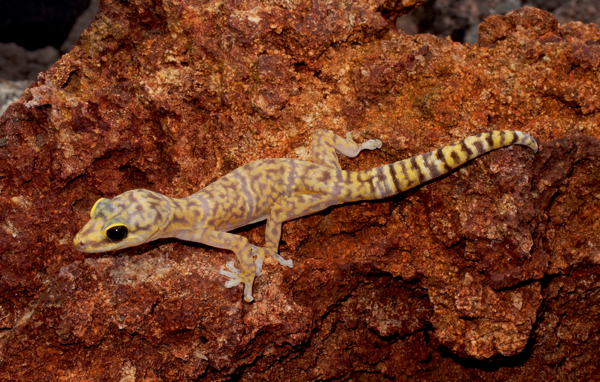
I keep all of my Oedura in Exoterra glass terrariums. Over the years I have built and dismantled many dozen of setups but the current caging has been the most useful and durable. I use the 30 x 30 x 30 cm cages for species such as O. jacovae, O. rhombifer and O. lesueurii, the 30 x 30 x 45cm cages for species such as O. coggeri and O. attenboroughi and the 45 x45 x45 cm cages for the remaining larger species and for groups of smaller species. The are set up quite basically with a light desert sand covering on the floor to stop feces sticking to the floor, multiple vertical stacked bark pieces, a water bowl and a nest box. The nest boxes, mostly small flowerpots with a terracotta dish as a lid, are kept dry during the winter cooling period and then filled with a 50:50 mix of sand and moist coir peat when breeding. I feed mainly crickets and occasionally roaches and usually feed from August to April and then cool the remainder of the year. I dust all feeders with a calcium supplement for two out of three feeds and rely on well fed crickets with a healthy vegetable gutload to provide vitamins.
In our local area we get several species of Oedura such as O. jacovae, O. robusta and O. tryoni and the outside of my house maintains a healthy population of O.robusta.
What keeps me interested in Oedura is the plethora of locality specific differences. Even within a single species the range of colours and varieties is staggering and many are quite spectacular. Most are straightforward to breed but species such as O. filicipoda are a frustrating challenge with slow maturity (4-5 years) and often only one or two clutches per year. I have managed to acquire numerous forms via zoos and legal collectors in Western Australia that fall into no specific species category at this stage (or are currently clumped where they don’t belong) and it is interesting to look at juvenile patterns and behaviors to see just where these forms fit taxonomically.
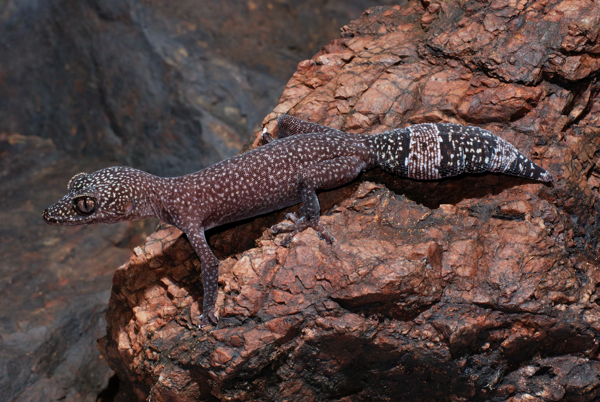
Joe Hupp
I am currently working with Oedura monilis, Oedura robusta, and Amelanistic Oedura castelnaui.
My interest in this genus stemmed from a general interest in Australian geckos. The first species I purchased was a group of 5 baby Amelanistic O. castelnaui from Saurian Enterprises which turned into 1.5 (1 male, 5 females). The next species was O. monilis followed by O. robusta. There are a total of 15 species of Oedura. About 9 species are available in the US. While none are common, the most likely to be found available are O. monilis, O. robusta, O. castelnaui both amelanistic and regular form, O. coggeri, O. marmorata, and O. tryoni.
The care for all 3 species I work with is fairly similar. I keep all of them in 1.2 groups in 10 gallon tanks. For a substrate I have used both organic peat on its own as well as a mix of 70% organic peat and 30% sand. I always use multiple cork slabs at 45-80 degree angles so they can break visual field if necessary. I use an incandescent bulb for the heat source, 40 watt if split over 2 tanks and a 25 watt if over a single tank. The temps on these bulbs can very with specific brands so always actually check your temps. Ideally 85-92F in the hot spot and 75-80 ambient temperature. I used UVB the first 2 years of the 6 I have been breeding them. I have seen no difference in the last 4 years I have not used it. A medium level of humidity is perfect for these 3 species. I spray the tanks down 3-4 times a week and they do have a water bowl. I feed dusted crickets 3-4 times a week and provide approximately 3-4 crickets per gecko, no longer than the width of the gecko’s head. If you do not intend to breed them a cooling cycle is not needed. For cycling I take them down to 60-65F with no hot spot. They only get sprayed 1-2 times a week and are not fed for the 4 weeks they are cycled. Once I bring them back up to their accustomed temperature, I spray them daily for the first 3 weeks. The only species where heavy spraying is necessary to reproduce is O. robusta but the others do seem to appreciate the humidity after cycling. Eggs are incubated at 82-84F in vermiculite 1:1 with water by weight. They hatch in 55-70 days. If the babies get a stuck shed, I put them in a deli cup with a damp piece of cloth. I put the lid on it and stick it in the incubator for a day or so.
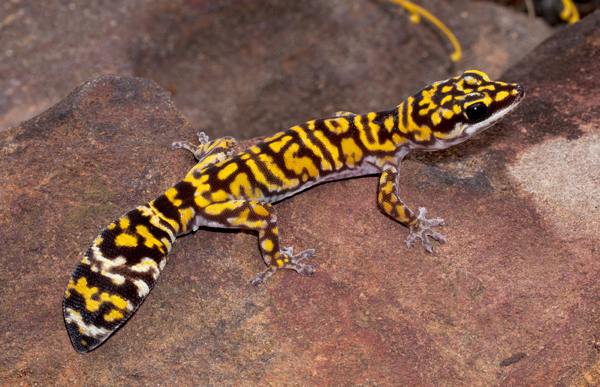
These are primarily nocturnal geckos but can be seen out in the open during the day. Behavior includes tail wagging before eating in some species and back arching and tail waving when showing a threat display. One interesting physiological thing about Oedura in that the ends of their fingers bifurcate into two digits. All three species I work with come from scrub forests — tropical rain forest edges.
One of the biggest challenges with Oedura as well as other Aussie reptiles is genetic diversity. Australia does not allow export of its fauana so what is out is out. Since there will be no influx of fresh genes it is important to obtain as many bloodlines for your groups as possible. If this is not done, the future of healthy Oedura in the hobby will eventually decline or drop out all together.
Kevin Cantrell
I have been keeping Oedura, pronounced “Ee-dur-ah,” for 5 years now. I am currently working with the following, in alphabetical order: Nebulifera(Oedura) robusta, Oedura castelnaui, Oedura coggeri, Oedura marmorata, Oedura monilis and Oedura tryoni. These are one of my favorite groups of gecko, period.
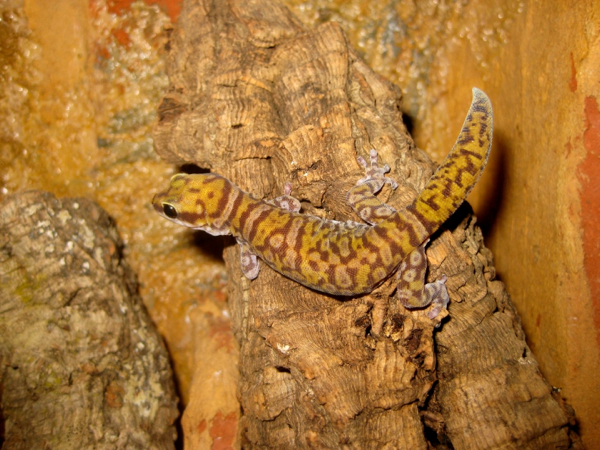
I first got interested in Oedura geckos a about 12 years ago. REPTILES magazine did a big spread on them. If memory serves, the article was written by Bill Love. I thought they were really beautiful and graceful looking geckos, but they just weren’t readily available at the time. My interest in them was renewed about five years ago, after I sold off my snake collection and dove head first into geckos. After getting a nice sized group of crested geckos and a few others, I wanted something different. I was digging through some old boxes one day and found that REPTILES article and started doing some online searching. I found a Geckos Unlimited classified ad that was a few months old for some sub-adult Oedura castelnaui. I got in contact with the woman selling them (Elizabeth Freer of the former GGA). I got a trio from her and we’ve been friends ever since. My first Nebulifera robusta came from currently retired gecko breeder, Jerry Peebles. The rest were sourced from wherever I could find them!
I keep my velvets in front opening ZooMed enclosures with artificial rock walls. 12”x12”x18” vivs for the smaller/medium sized species and 18”x18”x18” vivs for the marmorata. Some people have had good luck keeping them in simple 10 gallon terrariums, but I prefer the convenience of the front opening tanks. The rock walls tend to help the geckos feel more secure and add a level of décor to the vivariums. For substrate I use a 60/40 mix of play sand and sifted peat moss. The actual cage décor depends on species: Castelnaui get cork tubes, coggeri get cork flats, marmorata get slate and cork flats, monilis and tryoni get tree fern logs, and the robusta get iron bark flats and rolls. Water bowls are not provided for any of my Oedura.
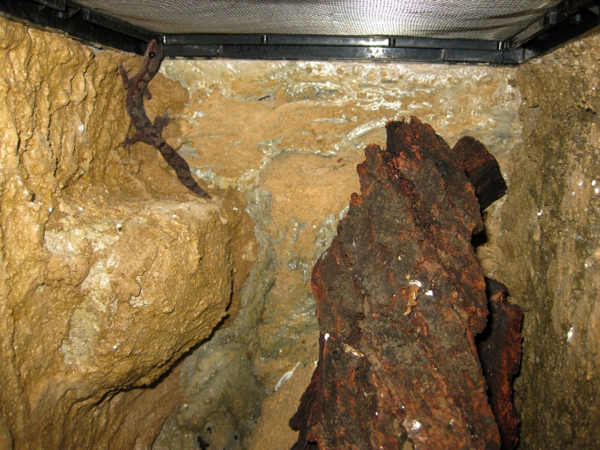
What do I find most interesting about these geckos? Their toes!!!! Seriously, look at those things, they look like octopus suction cups.
My biggest challenge has been getting repeatable breeding results from my Oedura. Some years they lay like crazy with good fertility and hatch rates, other years they will hardly lay for me at all. Admittedly, it’s all in the winter cooling, but between living coastal Southern California and keeping the house warm enough during the winter for the rest of my tropical herps I have a hard time getting these guys cool enough for long enough. I’ll be trying a few new things this winter though. Fingers crossed for the 2013 year!
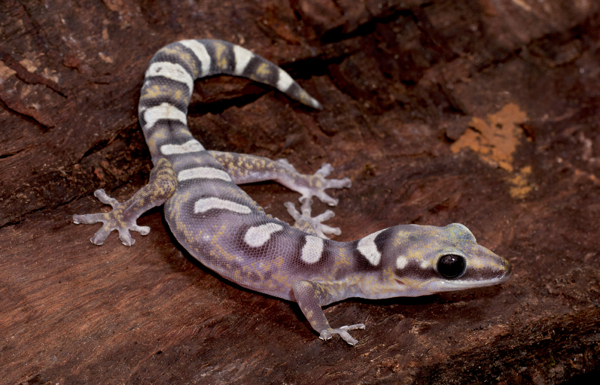
About our Authors
Danny Brown is 42 years old and lives in Queensland , Australia. He has kept geckos for the past 30 years and has kept and bred most available species. He currently maintains approximately 50 varieties of Australian geckos and another 60 varieties of skinks and pygopods as well as aviary birds, waterfowl, rainbowfish and show poultry. He is a specialist Reptile and Avian vet by trade but is now in forced retirement due to injury. He is married with three children.
Kevin Cantrell’s life with reptiles started at a young age. As soon as he could walk he was following around his father’s desert tortoises (Gopherus agassizii) and catching fence lizards (Sceloporus occulatus ssp) in the fields near his house. He started keeping reptiles on his own at age 7 and started breeding geckos at the age of 12. Kevin has worked with many reptiles over the years including many agamids, iguanids, chameleons, tortoises, snakes and about 70 species of gecko.
Kevin has been focusing primarily on geckos since 2006 and founded Passport Herpetoculture in 2008. For more information on Kevin and a list of the geckos he currently keeps, please visit his website: www.passportherp.webs.com
Joe Hupp has been keeping and breeding reptiles for a little over 20 years now. His current focus is on Australian, New Caledonian, and African Geckos as well as Dart frogs. While in college he worked in the herpetarium at the St. Louis Zoo for 2 years. He has also done paid research for the Missouri Department of Conservation on foreign introduced species as well as assisting reproductive research for endangered wolves at Wild Canid Research & Survival Center. He has now officially gone down to a part time job and is working on turning the hobby into a business. His website is www.australedonian.com


Thank you for the great articles on the Oedura. Their colors and patterns are very impressive.